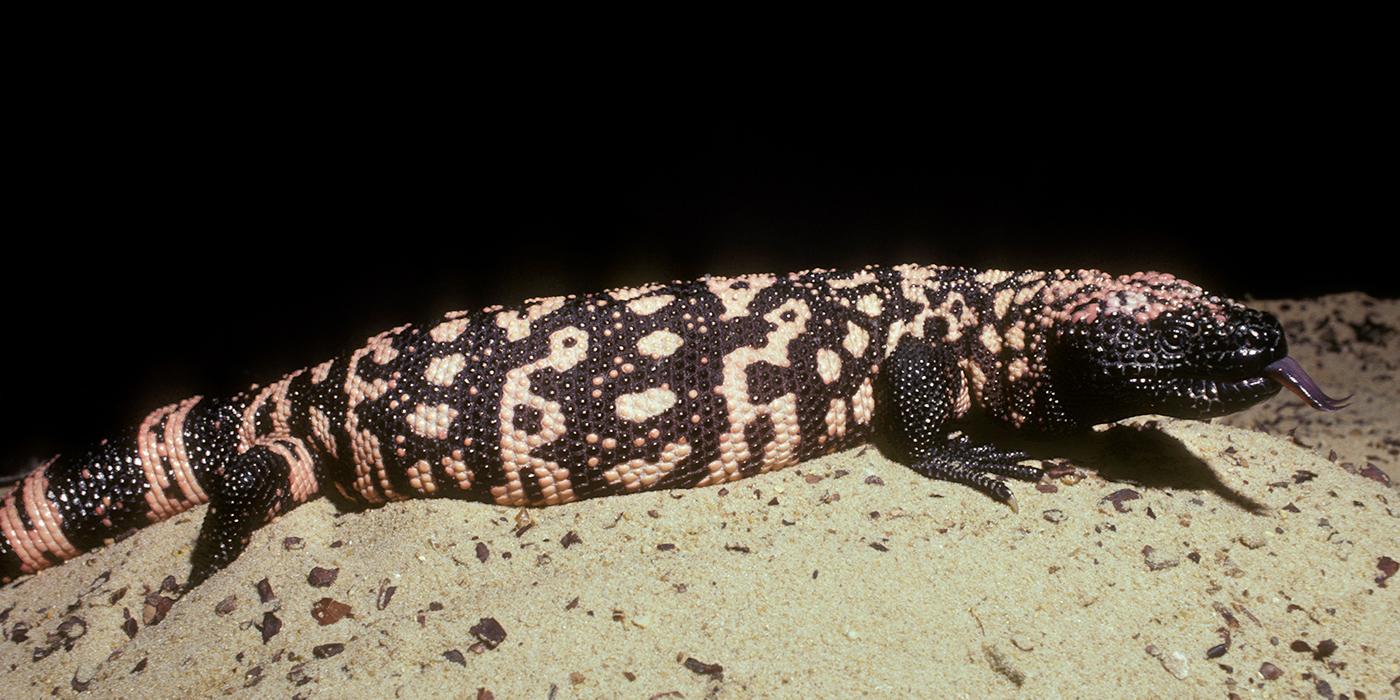
The Gila monster is one of only small number of venomous lizards (including the Mexican beaded lizard, the Komodo dragon and some Australian species). It can bite quickly and hold on tenaciously. Rather than injecting venom through hollow fangs like venomous snakes, Gilas have enlarged, grooved teeth in their lower jaw. When they bite, their powerful jaws chew the venom in through capillary action along the grooves in these teeth. Gila monster venom is about as toxic as that of a western diamondback rattlesnake. However, a relatively small amount of venom is introduced in a Gila bite. Gila monsters may hold onto a predator for more than ten minutes. There is no antivenin for Gila bites.

Gila monsters most often raid nests to prey on small birds and eggs. They also catch small mammals, lizards, frogs, insects and carrion. They can eat up to one-third of their body weight in one meal.
Their large size means they can store more energy than smaller lizards. They store fat both in their tails and their bodies. Their low metabolic rates and ability to eat large meals combined with their capacity to store fat, make frequent searching for food unnecessary. Therefore, Gila monsters often stay hidden underground. It has been suggested that Gilas can consume all the calories they need for a year in three or four large meals. Their top speed is only 1.5 miles per hour (2.4 kilometers per hour).
At the Smithsonian’s National Zoo, Gila monsters eat mice every other week. Occasionally, they get a hard-boiled egg.





